Have you ever come across those white, round mushrooms that seem to magically appear overnight? Well, those are puffball mushrooms, and they are a delightful addition to any culinary adventure. Wonderfully unique in their texture and taste, puffball mushrooms can be used in a variety of ways to elevate your dishes to new heights. From sautéing them with garlic and butter to incorporating them into soups and stews, the possibilities are endless. So, let’s unravel the mystery of these intriguing mushrooms and discover the fantastic ways you can use them in your kitchen.
What are puffball mushrooms?
Puffball mushrooms are a fascinating variety of fungi that can be found in various parts of the world. They belong to the family of mushrooms known as earthstars, and they are known for their unique appearance and characteristics. Puffball mushrooms differ from other mushrooms in that they do not have a stalk or gills. Instead, they are round in shape and release their spores through a small opening at the top.
Appearance and characteristics
Puffball mushrooms have a distinct appearance that sets them apart from other types of fungi. They are usually round or slightly oval in shape, and their outer skin is smooth and white. As puffball mushrooms mature, they develop a unique feature called a peridium, which is a spore sac that helps protect the spores until they are ready for release. The peridium can be various colors, including yellow, brown, or black, depending on the type of puffball mushroom.
One of the most fascinating characteristics of puffball mushrooms is their method of spore release. Unlike other mushrooms that disperse their spores through the wind or by insects, puffball mushrooms rely on external forces to release their spores. When the spores are mature, the peridium ruptures at the top, and the spores are forcibly released into the air in a puff or cloud-like manner, giving puffball mushrooms their name.
Types of puffball mushrooms
There are several types of puffball mushrooms, each with its own unique characteristics and culinary uses. Some of the most common types include the Giant Puffball (Calvatia gigantea), which can grow to enormous sizes, and the Pear-shaped Puffball (Calvatia utriformis), which has a distinctive pear-like shape. Other varieties include the Gem-studded Puffball (Lycoperdon perlatum) and the Devil’s Snuffbox (Lycoperdon perlatum), both of which have distinctive spiky exteriors.
Identification of puffball mushrooms
When foraging for puffball mushrooms, it is important to be able to correctly identify them to avoid any potential risks. There are several key characteristics to look out for when identifying puffball mushrooms.
Size and color
Puffball mushrooms can vary in size, with some species growing as small as a golf ball and others reaching sizes as large as a soccer ball. When identifying puffball mushrooms, note their size and compare it to known species in your area. Additionally, the color of the puffball’s outer skin can provide vital clues for identification. Some puffball mushrooms have white outer skins, while others may have shades of yellow, brown, or black.
Texture and shape
The texture and shape of puffball mushrooms can also aid in identification. The outer skin should be smooth and firm, without any signs of decay or discoloration. Puffball mushrooms should have a round or slightly oval shape, with no visible stalk or gills. Additionally, puffball mushrooms should feel solid when gently pressed, indicating they are still fresh and safe to consume.
Spore release
Another important characteristic to consider when identifying puffball mushrooms is their spore release method. Puffball mushrooms release their spores through a small opening at the top of the mushroom, known as the ostiole. This opening is crucial for proper identification, as other mushrooms may have similar appearance and size but differ in their spore release method. It is important to check for the presence of the ostiole to ensure you have found a true puffball mushroom.
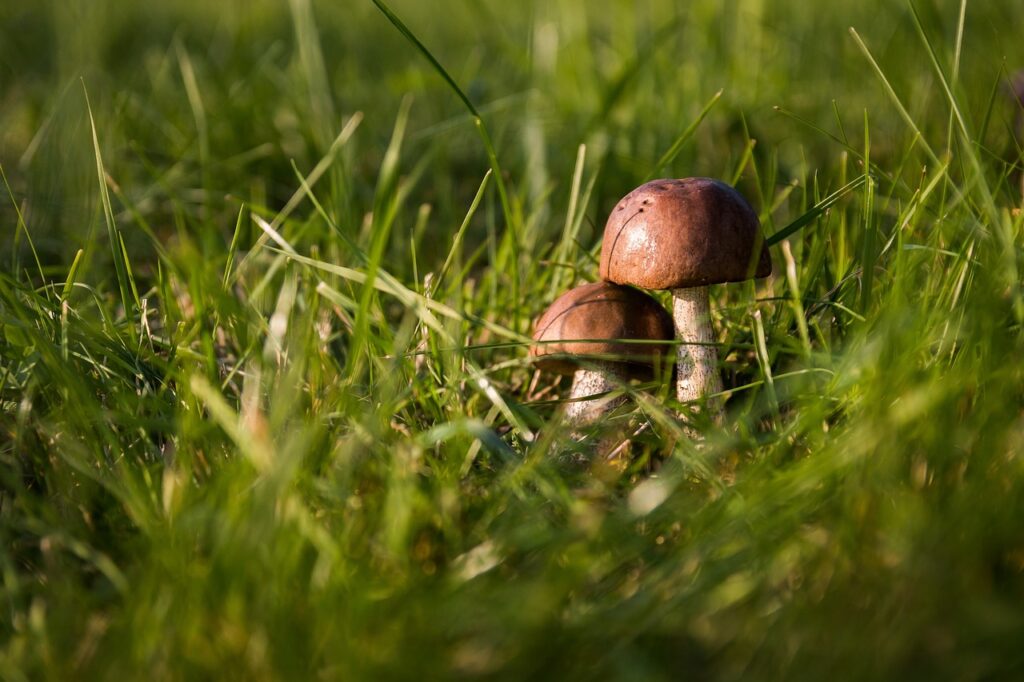
Culinary uses of puffball mushrooms
Puffball mushrooms have long been valued for their culinary uses and unique taste. While not all puffball mushrooms are edible, there are several varieties that are safe and delicious to consume.
Edible puffball mushrooms
The Giant Puffball and the Pear-shaped Puffball are two of the most commonly consumed varieties of puffball mushrooms. These mushrooms have a mild and delicate flavor, similar to that of white button mushrooms. Their texture is firm and meaty, making them suitable for a wide range of cooking techniques.
Cooking techniques
Puffball mushrooms can be prepared in a variety of ways to showcase their unique flavor and texture. They can be sautéed with garlic and butter, grilled to add a smoky flavor, or even used as a meat substitute in vegetarian dishes. Puffball mushrooms can also be used in soups, stews, and stir-fries, adding a delightful earthy taste to these dishes. The key is not to overcook puffball mushrooms, as they can become mushy and lose their distinct texture.
Health benefits of puffball mushrooms
In addition to their culinary uses, puffball mushrooms also offer health benefits due to their nutritional value and medicinal properties.
Nutritional value
Puffball mushrooms are low in calories and fat, making them a healthy addition to any diet. They are also a good source of essential nutrients such as vitamins B and C, potassium, and fiber. Consuming puffball mushrooms can help support a healthy immune system, regulate digestion, and promote overall well-being.
Medicinal properties
Puffball mushrooms have been used in traditional medicine for centuries due to their potential medicinal properties. They are believed to have anti-inflammatory and antioxidant properties, which can help reduce inflammation and protect against oxidative stress. Some studies have also suggested that certain compounds found in puffball mushrooms may have anti-cancer properties, although more research is needed to fully understand their potential benefits.
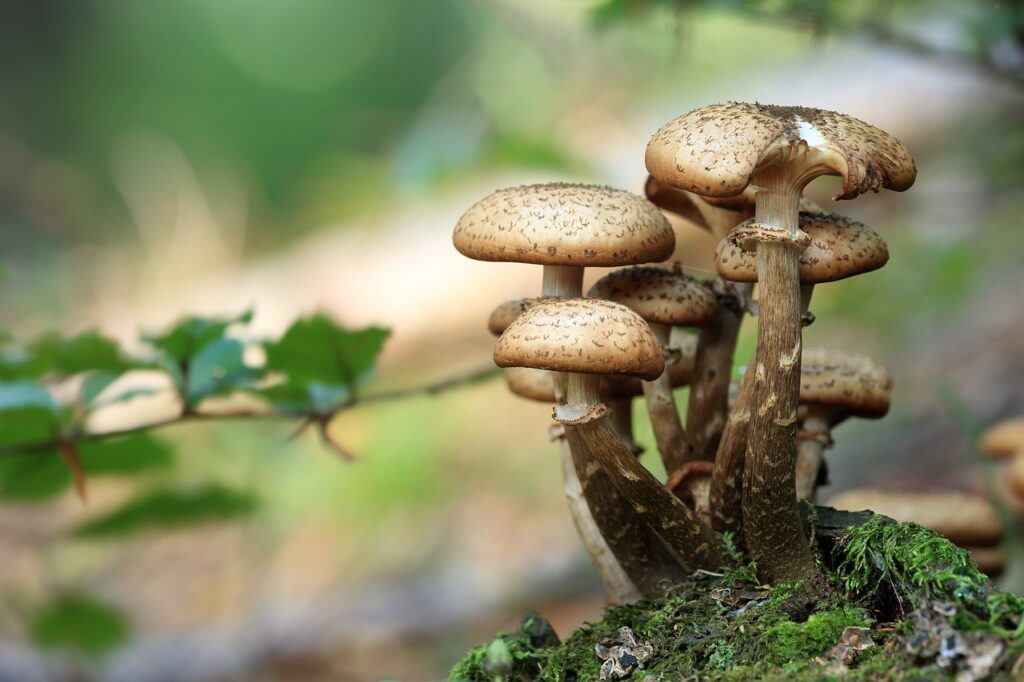
Foraging and harvesting puffball mushrooms
If you are interested in harvesting puffball mushrooms, it is important to know where and when to find them, as well as the proper techniques for harvesting.
Finding puffball mushrooms in the wild
Puffball mushrooms can be found in various habitats, including grassy fields, forests, and even urban areas. They often grow in clusters or individually, and their round shape and distinctive color can make them easier to spot. Look for areas with decaying logs, leaf litter, or rich soil, as these are ideal habitats for puffball mushrooms to thrive.
Best time for harvesting
The best time to harvest puffball mushrooms is when they are still young and firm. As they mature, their texture can become spongy, and the spores may start to mature, indicating that they are past their prime for consumption. It is important to check the maturity of the puffball mushrooms before harvesting to ensure their quality and taste.
Proper harvesting techniques
To harvest puffball mushrooms, gently twist or cut them at the base, being careful not to disturb the surrounding soil or vegetation. Avoid using any tools or knives that may break the mushroom’s skin, as this can affect their texture and appearance. It is also crucial to leave some puffball mushrooms behind to allow for reproduction and the continued growth of the species.
Preparing puffball mushrooms for consumption
Before using puffball mushrooms in your favorite recipes, it is important to properly prepare them to ensure their safety and enhance their flavor.
Cleaning and washing
Start by gently brushing off any dirt or debris from the outer skin of the puffball mushroom. Avoid washing them under running water, as puffball mushrooms can absorb excess moisture, which can affect their texture and make them soggy.
Removing the outer skin
While some puffball mushrooms have a soft outer skin that is edible, others may have a tougher skin that needs to be removed. To remove the outer skin, carefully cut or peel it off using a sharp knife or your fingers. Be sure to remove any discolored or decayed portions as well.
Cutting and slicing
Once the puffball mushroom is cleaned and the outer skin is removed, you can proceed to cut or slice it according to your desired recipe. Puffball mushrooms can be sliced into thin rounds, chopped into small cubes, or left whole for stuffing.
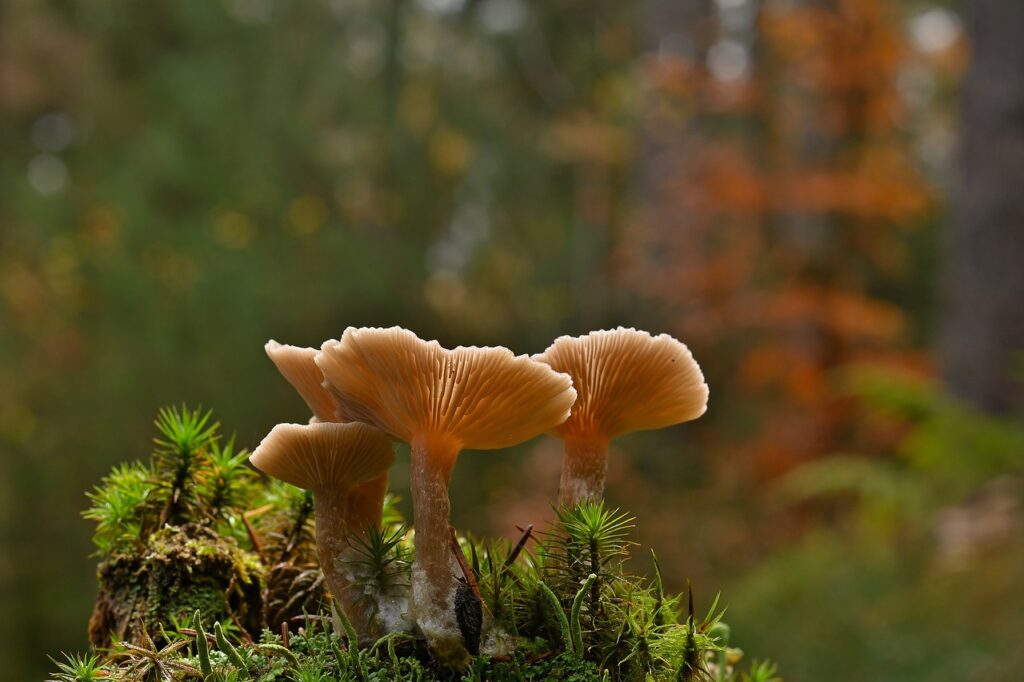
Recipes featuring puffball mushrooms
Now that you have prepared your puffball mushrooms, it’s time to explore some delicious recipes that showcase their unique taste and texture.
Puffball mushroom risotto
Ingredients:
- 1 cup Arborio rice
- 4 cups vegetable broth
- 1 cup sliced puffball mushrooms
- 1 small onion, diced
- 2 cloves garlic, minced
- 1/2 cup grated Parmesan cheese
- 2 tablespoons butter
- Salt and pepper to taste
- Fresh parsley for garnish
Instructions:
- In a large saucepan, melt the butter over medium heat. Add the diced onion and minced garlic, and sauté until translucent.
- Add the Arborio rice to the saucepan and stir to coat the grains with the butter mixture.
- Gradually add the vegetable broth, one cup at a time, stirring continuously until the liquid is absorbed.
- After adding the third cup of vegetable broth, add the sliced puffball mushrooms and continue stirring.
- Continue adding the remaining vegetable broth, stirring frequently, until the rice is cooked and the mixture is creamy.
- Stir in the grated Parmesan cheese and season with salt and pepper to taste.
- Remove from heat and garnish with fresh parsley. Serve hot and enjoy!
Grilled puffball mushroom steak
Ingredients:
- 2 large puffball mushrooms
- 2 tablespoons olive oil
- 2 cloves garlic, minced
- 2 teaspoons balsamic vinegar
- Salt and pepper to taste
- Fresh thyme for garnish
Instructions:
- Preheat a grill or grill pan to medium-high heat.
- In a small bowl, whisk together the olive oil, minced garlic, balsamic vinegar, salt, and pepper.
- Brush the mixture onto both sides of the puffball mushrooms.
- Place the mushrooms on the grill and cook for 3-4 minutes on each side, or until grill marks appear and the mushrooms are tender.
- Remove from the grill and let them rest for a few minutes.
- Slice the grilled puffball mushrooms into thick steaks and garnish with fresh thyme. Serve as a vegetarian main course or as a side dish.
Stuffed puffball mushrooms
Ingredients:
- 8 medium-sized puffball mushrooms
- 1 cup breadcrumbs
- 1/2 cup grated Parmesan cheese
- 2 cloves garlic, minced
- 1/4 cup chopped fresh parsley
- 2 tablespoons olive oil
- Salt and pepper to taste
Instructions:
- Preheat the oven to 375°F (190°C).
- Clean the puffball mushrooms and remove their outer skin.
- In a medium bowl, combine the breadcrumbs, grated Parmesan cheese, minced garlic, chopped fresh parsley, olive oil, salt, and pepper.
- Stuff each puffball mushroom with the breadcrumb mixture, pressing it firmly into the cavity.
- Place the stuffed mushrooms on a baking sheet and bake for 20-25 minutes, or until the mushrooms are cooked through and the topping is golden brown.
- Remove from the oven and let them cool for a few minutes before serving. Enjoy these flavorful stuffed puffball mushrooms as an appetizer or a side dish.
Preserving and storing puffball mushrooms
If you have an abundance of puffball mushrooms and would like to enjoy them throughout the year, there are several methods for preserving and storing them.
Drying puffball mushrooms
Drying puffball mushrooms is a popular preservation method that helps extend their shelf life. To dry puffball mushrooms, start by cutting them into thin slices or small pieces. Arrange the slices in a single layer on a baking sheet or a dehydrator tray. Place them in an oven or dehydrator set to a low temperature, around 130°F (55°C), and dry until the mushrooms are brittle and dry to the touch. Store the dried mushrooms in an airtight container in a cool, dark place.
Freezing puffball mushrooms
Another option for preserving puffball mushrooms is to freeze them. Start by cleaning and preparing the mushrooms as usual, removing any outer skin and slicing them to your desired thickness. Blanch the sliced mushrooms in boiling water for 2-3 minutes, then transfer them to an ice bath to cool. Pat the mushrooms dry and arrange them in a single layer on a baking sheet. Place the baking sheet in the freezer until the mushrooms are completely frozen. Once frozen, transfer the mushrooms to airtight freezer bags or containers and store them in the freezer for up to six months.
Canning puffball mushrooms
Canning is a more involved method of preserving puffball mushrooms, but it can provide long-term storage. Start by cleaning and preparing the mushrooms, removing any outer skin and slicing them as desired. Sterilize canning jars and lids by boiling them in water for a few minutes. Prepare a brine or sauce of your choice to pack the mushrooms in, such as vinegar, herbs, and spices. Pack the sliced mushrooms into the sterilized jars, leaving some headspace at the top. Pour the brine or sauce over the mushrooms, ensuring they are completely submerged. Place the lids on the jars and process them in a water bath canner according to your canner’s instructions. Allow the jars to cool completely before storing them in a cool, dark place.
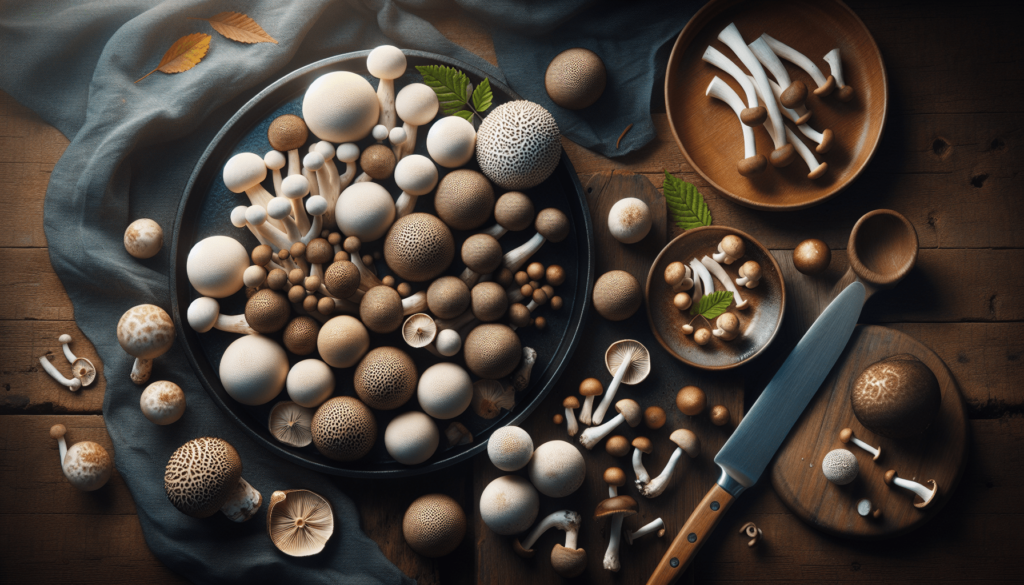
Cautions and considerations when using puffball mushrooms
While many puffball mushrooms are safe to eat and enjoy, it is essential to be cautious and aware of potential risks when foraging and consuming them.
Toxic look-alikes
One of the most crucial aspects of safe foraging is being able to distinguish edible puffball mushrooms from toxic look-alikes. Certain mushrooms, such as the destroying angel and the deadly webcap, can resemble puffball mushrooms in appearance but are highly poisonous. It is imperative to be familiar with the distinct characteristics of puffball mushrooms and consult with an experienced forager or mushroom expert if you are unsure. Always err on the side of caution and avoid consuming any wild mushrooms that you are not 100% certain are safe.
Sensitivity and allergies
While puffball mushrooms are generally safe for consumption, some individuals may be sensitive or allergic to certain types of mushrooms. If you are new to consuming puffball mushrooms or have a known sensitivity to mushrooms, it is recommended to start with a small portion and monitor your body’s reaction. If you experience any adverse symptoms such as digestive discomfort, skin rash, or difficulty breathing, discontinue consumption and seek medical advice.
Interesting facts about puffball mushrooms
Puffball mushrooms have a rich history and intriguing folklore associated with them. Here are a few interesting facts about these unique fungi.
Puffball mushrooms and folklore
Puffball mushrooms have long been associated with folklore and superstitions in different cultures around the world. In some traditions, puffball mushrooms were believed to possess magical properties and were used in various rituals and spells. They were also considered a symbol of fertility and were thought to bring good luck and prosperity.
Giant puffball mushrooms
The Giant Puffball (Calvatia gigantea) is one of the most impressive species of puffball mushrooms. It can grow to enormous sizes, reaching diameters of up to three feet (one meter) and weights of up to 40 pounds (18 kilograms). These giant mushrooms are a sight to behold and often elicit astonishment and wonder from those who discover them.
In conclusion, puffball mushrooms are a fascinating variety of fungi that offer a range of culinary possibilities, health benefits, and interesting folklore. Their unique appearance, texture, and flavor make them a sought-after ingredient in various culinary creations. However, it is crucial to correctly identify puffball mushrooms and exercise caution when foraging, as certain varieties can be toxic. By following proper harvesting and preservation techniques, you can enjoy the delightful taste and benefits of puffball mushrooms throughout the year. So why not embark on a puffball mushroom adventure and explore the wonders of these remarkable fungi? Happy foraging and bon appétit!

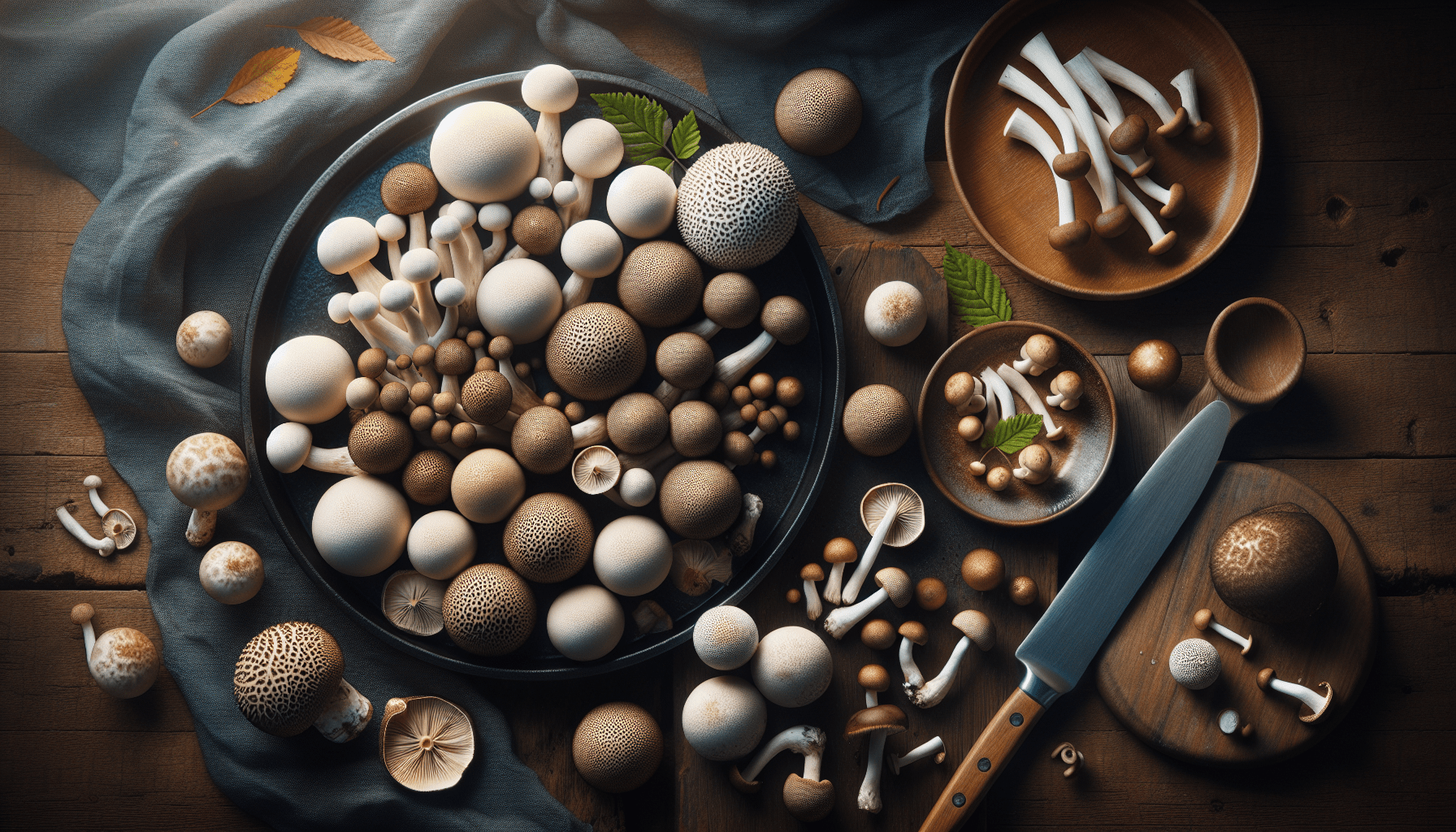

No Responses